Teeny hummingbirds among the spring visitors to this top recreation spot in West Alton
Keeping an eye out for colorful spring birds? The Audubon Center at Riverlands in West Alton offers free entry, walking trails, events and more, and there are plenty of species you can spot there this time of year.
Ruby-throated hummingbirds have been reported just south of Illinois so far this year and are expected to migrate through the Land of Lincoln in the coming weeks, one of many colorful birds that will make their way to the state soon.
The local birding spot features a building where you can flip through species guides, ask staff questions and look through telescopes to spot far-off fowl, as well as participate in avian-themed events.
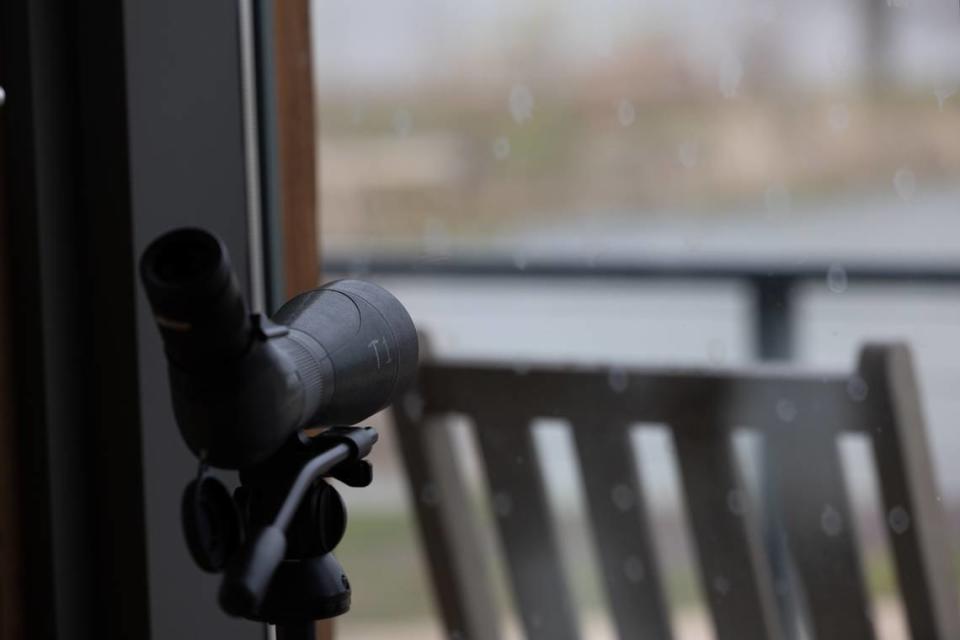
The center’s outdoor features include miles of walking trails, some of which are accessible to people using mobility aids. Some of the trails close seasonally, but they will be open April 16. Visitors are welcome to bring dogs, though they are not allowed inside the center building when events involve live birds.
Along with spring migrants, you can see a wide variety of other critters at Audubon Center at Riverlands, including bald eagles, frogs and more.
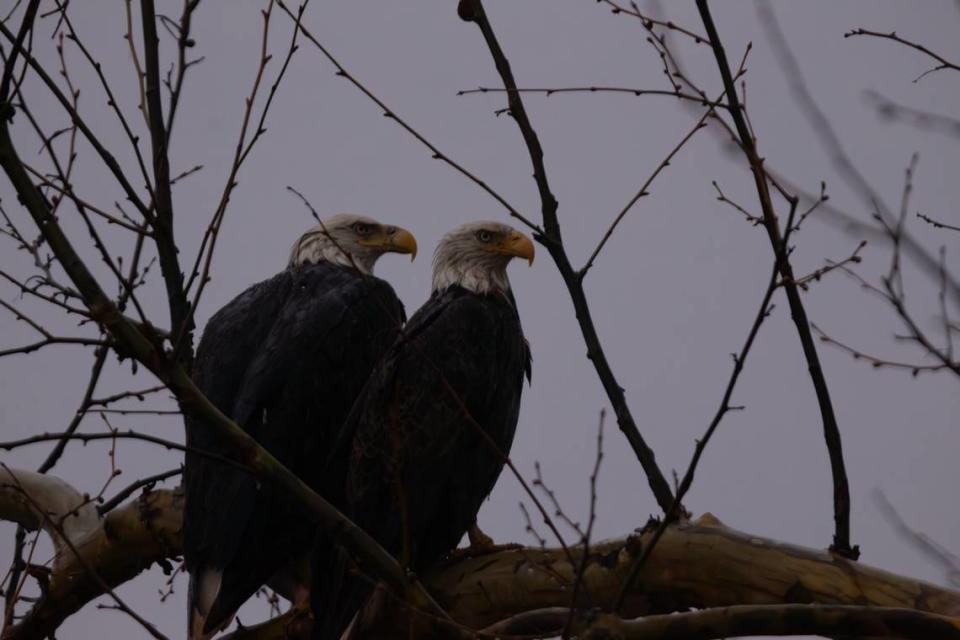
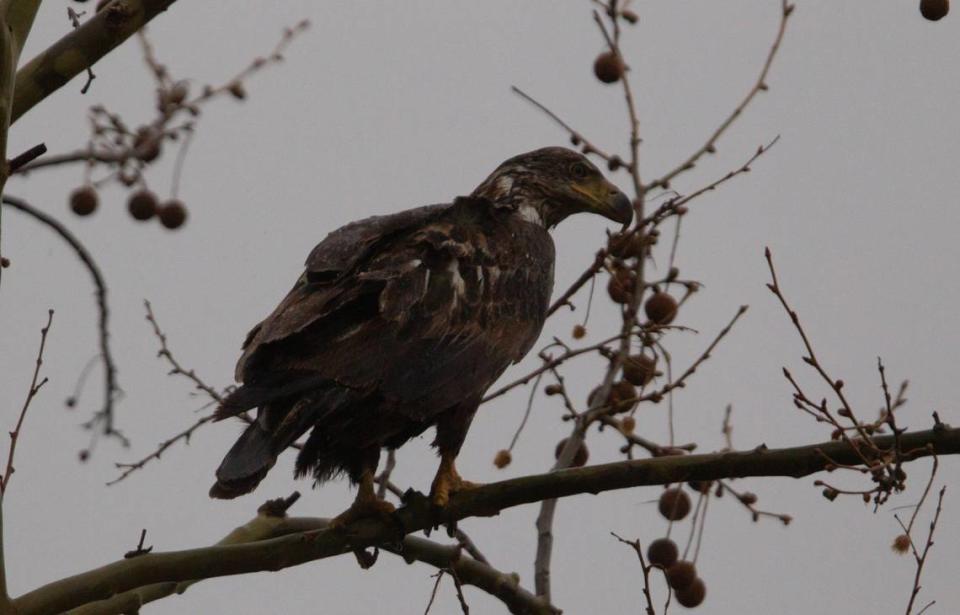
Tara Hohman, conservation science manager at Audubon Center at Riverlands, recommended beginner birders consider going out to explore with someone who knows a little more about the species.
“Birds can get really intimidating the more you learn, so I always tell people to start out simple,” Hohman said. “Start off with birds that you see regularly, and then you can jump off from there and try to explore a little bit more.”
You can also try using a field guide. There are book options for beginners organized by bird color, as well as state-specific information and backyard bird focuses. Or if you prefer pocket-sized info, you can download free apps such as Merlin Bird ID.
Here’s a peek into some of the springtime bird species you can find at Audubon Center at Riverlands. Some seasonal birds can already be spotted, while others will come out closer to mid or late April. Local birders can expect peak migration to occur around the first week of May, Hohman said, though it can vary.
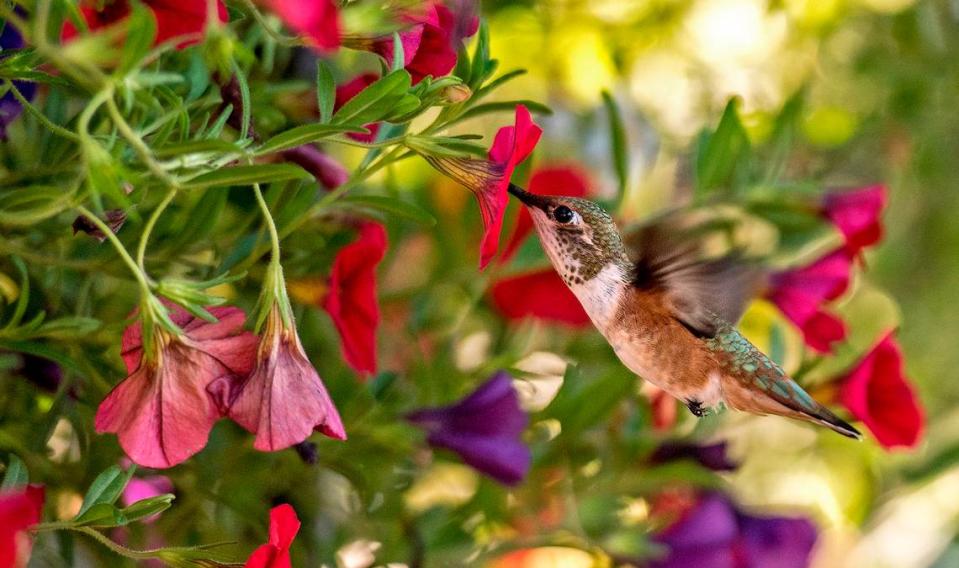
Hummingbirds
The hummingbird species you can regularly find in the metro-east and St. Louis region is the ruby-throated hummingbird. The birds have red and green coloring and many of them winter in Central America.
On average, a ruby-throated hummingbird weighs only 0.1 to 0.2 ounces, or less than a nickel, according to the American Bird Conservancy. Their wingspan is about 3.1 to 4.3 inches, and their bodies are 2.8 to 3.5 inches long.
To encourage ruby-throated hummingbirds to visit your yard, you can set up a hummingbird feeder with sugar water.
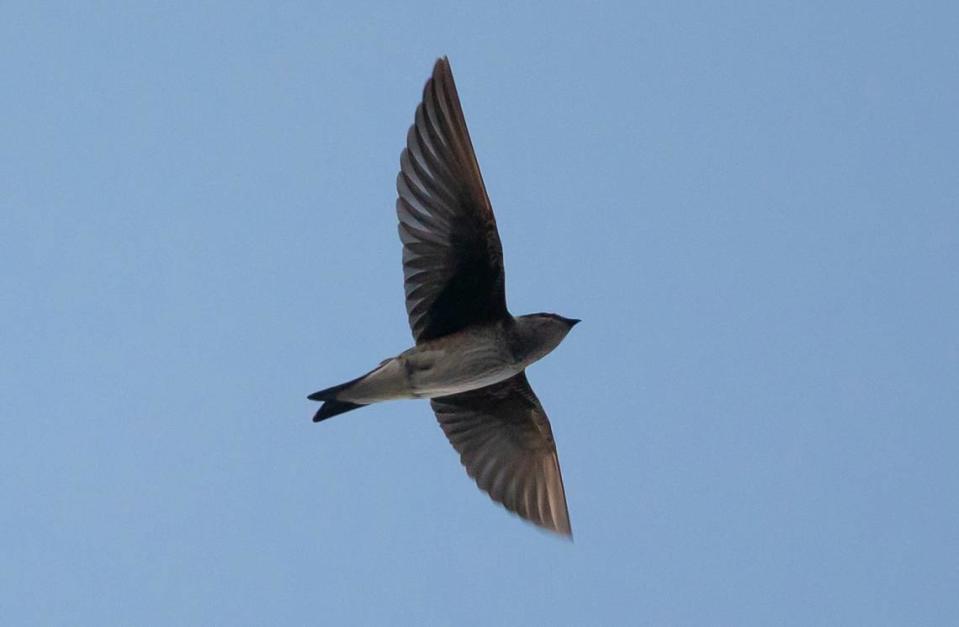
Purple martins
This small blue-purple bird needs humans to build houses for its survival. Purple martins eat a quarter of a trillion flying insects each year, including pests to humans and agriculture.
Female and immature male purple martins are “large and chunky,” often gray and duller than their adult male counterparts. Adult male purple martins have dark blue-purple coloring with brown or black wings.
Purple martin populations across the world have dramatically declined, and putting up gourds or multi-compartment bird housing can help carry on the species.
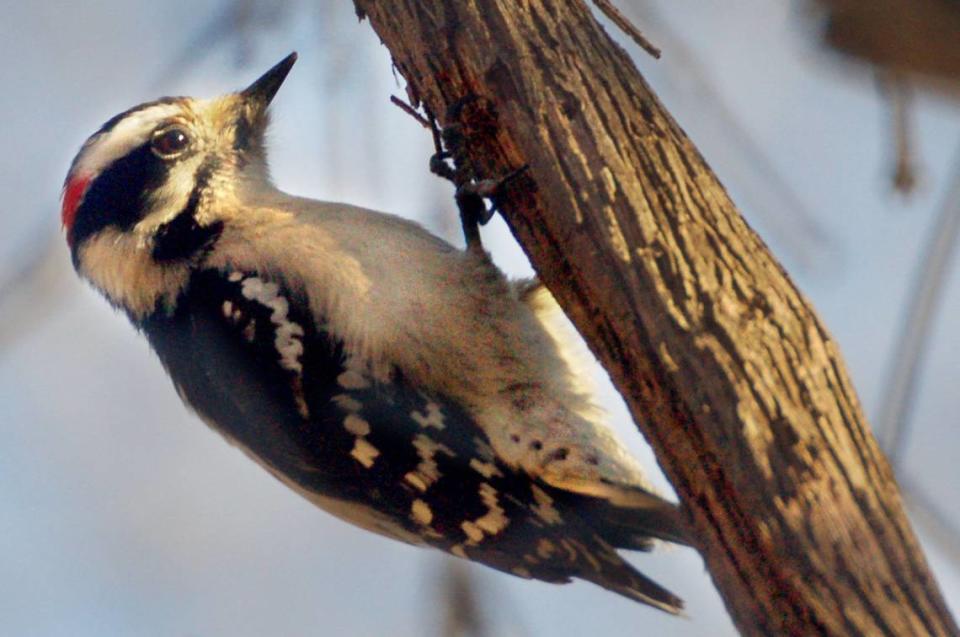
Woodpeckers
The downy and red-bellied woodpeckers are probably the two most frequently seen woodpecker species at the local sanctuary, Hohman said.
The downy woodpecker shows off black and white striping, and the male has a brilliant red spot on his head. The common species is the smallest woodpecker in North America, the National Audubon Society reports.
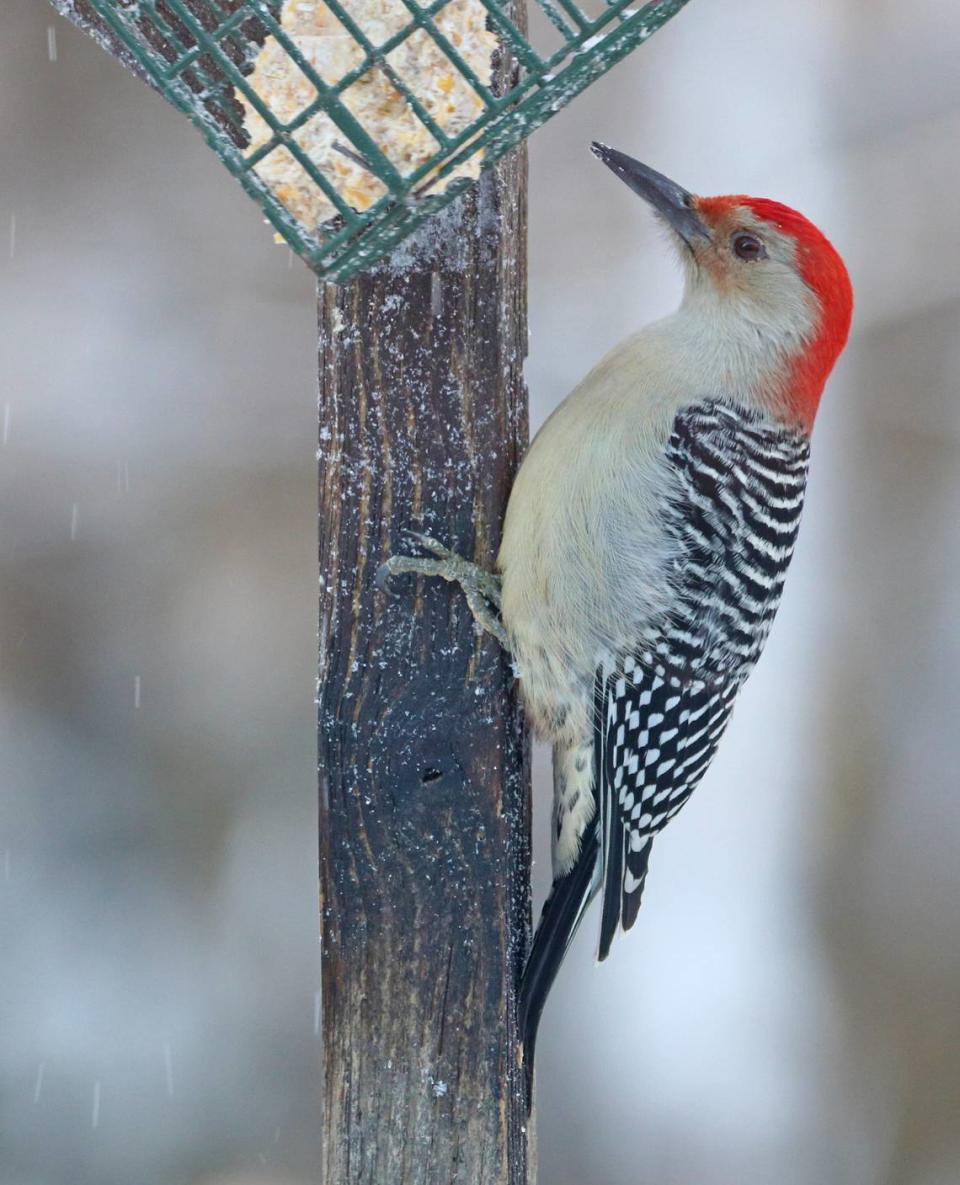
Red-bellied woodpeckers aren’t necessarily migratory, but may move south to escape particularly cold winters, the American Bird Conservatory reports.
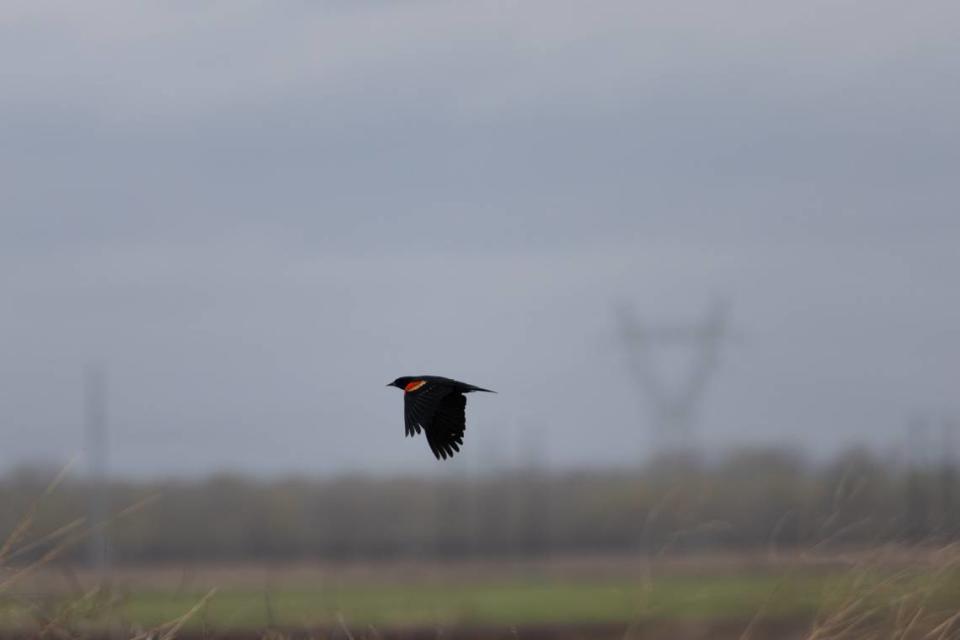
Red-winged blackbird
You can find the red-winged blackbird at the Audubon Center, and during springtime you may hear its call by the water: “conk-la-lee!”
Its size varies by population and subspecies, according to All About Birds, and the males are not as monogamous as red-bellied woodpeckers. Male red-winged blackbirds can have up to 15 mates and are willing to charge even horses and people who get too close.
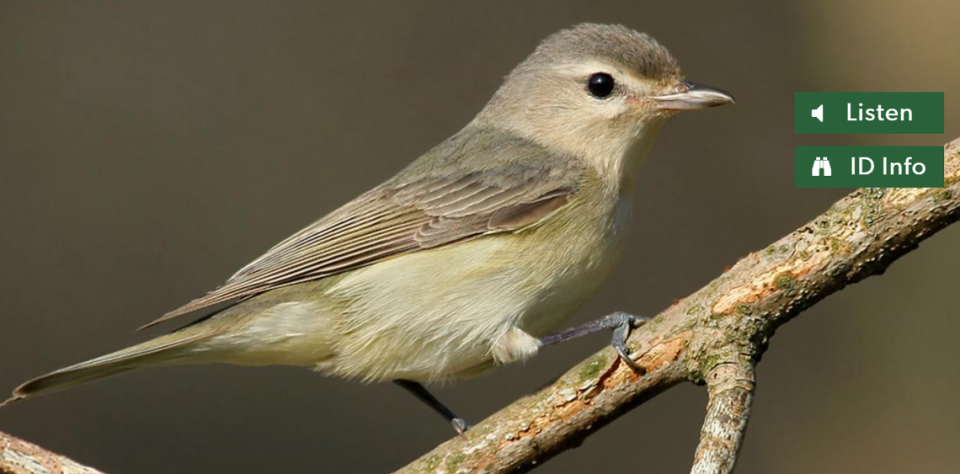
Warbling vireo
The warbling vireo can be spotted in southwestern Illinois and boasts a color similar to sage green with a darker head and wings.
You’re most likely to find them up in the treetops, and you may hear rather than see them. The species is known for its quick song, which researchers have found is at least partially learned by young vireos rather than inherited, All About Birds reports.
Breeding populations of warbling vireos are found across Illinois and Missouri.

